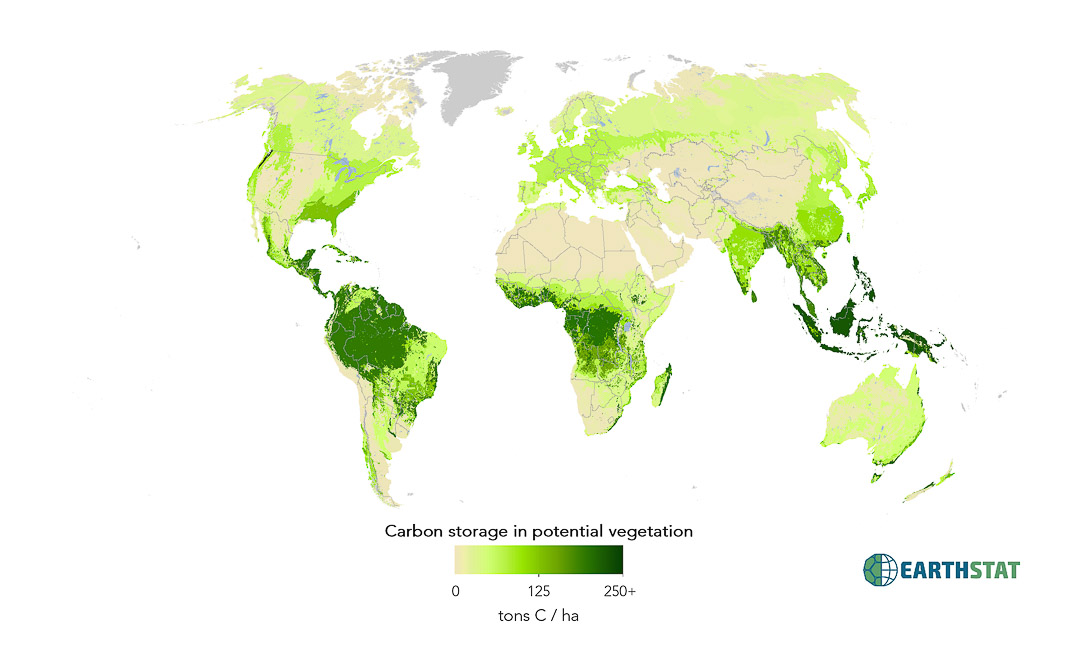
Download Data
Carbon Stocks in Potential Natural Vegetation
Land used for agricultural production presents a tradeoff to society. On one hand, agricultural lands provide essential food, feed, fiber, and increasingly, biofuels. On the other hand, in their natural state, these lands could provide additional important ecosystem services. Many social, political, and economic factors drive land use decisions and the choice to manage for some services at the expense of others. Understanding the tradeoffs among ecosystem services is critical to manage ecosystems for multiple goals. Some tradeoffs connect local actions with global issues. Agricultural practices affect carbon storage, with consequences for greenhouse gasses and climate change. How do we balance the need to expand agricultural production with the need to maintain or even expand ecosystem carbon stocks?
Citation:
West, P.C., H.K. Gibbs, C. Monfreda, J. Wagner, C.C. Barford, S.R. Carpenter, and J.A. Foley (2010). Trading carbon for food: Global comparison of carbon stocks vs. crop yields on agricultural land. Proceedings of the National Academy of Sciences (PNAS) 107(46), 19645–19648. Doi: 10.1073/pnas.101107810
Contact:
Direct questions by email to earthstat.data@gmail.com
For additional information regarding publications and research, visit http://gli.environment.umn.edu/
Data Products:
The following data products are included:
Carbon Storage in Potential Natural Vegetation
Tons carbon stored per hectare of land
Resolution:
Spatial: Five minute by five minute resolution (~10km x 10km at equator)
Map Projection:
- Data presented as five-arc-minute, 4320 x 2160 cell grid
- Spatial Reference: GCS_WGS_1984
- Datum: D_WGS_1984
- Cell size: 0.083333 degrees
- Layer extent:
- Top : 90
- Left: -180
- Right: 180
- Bottom: -90
License:
Data may be freely downloaded for research, study, or teaching, but must be cited appropriately. Re-release of the data, or incorporation of the data into a commercial product, is allowed only with explicit permission. If you would like to request permission to use EarthStat data for another purpose, please contact us at earthstat.data@gmail.com.
Methods:
From West et al. 2010, page 4:
Carbon stocks in potential natural vegetation were estimated by applying the IPCC Tier 1 methodology to potential vegetation and soil datasets using a committed carbon flux approach. We then estimated carbon stocks of herbaceous crops using yield data and methods for calculating net primary productivity (NPP) and assumed that annual NPP was equivalent to the standing carbon stock for most crops. This assumption is conservative, because aboveground biomass is only present for part of the year and then, harvested. Woody crop carbon stocks were estimated using IPCC Tier 1 methodology and the extrapolation approach defined in Gibbs et al.
